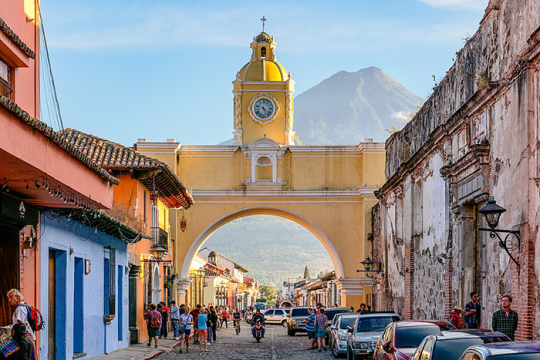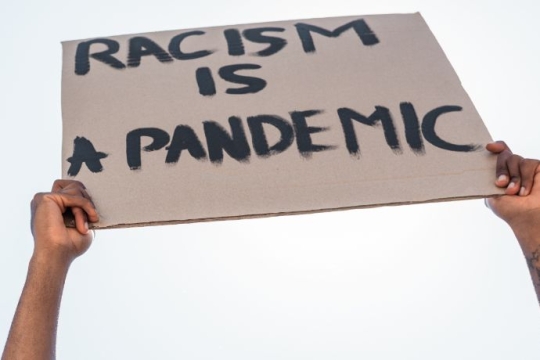
What does it truly mean to be Hispanic?
Generally, Hispanic describes a person whose origins are from a Spanish-speaking country - a term that was coined for the 1980 census. Before then, Hispanic individuals weren't recognized and forced to choose between "white" or "Black". To those who question why the U.S. needs months like Black History Month, Asian American and Pacific Islander Heritage Month, Native American Heritage Month, and Hispanic Heritage Month, it is because the U.S. has a history of celebrating itself as a progressive and advanced country without recognizing all its citizens, and in many instances, erasing any contributions or mere existence of communities that contributed to its success.
The first census was taken in 1790, exhibiting a number of racist and harmful practices from its inception. For the next 170 years, people known as enumerators, or census takers, would document a person's race for them. From 1850-1930, race was intrinsically related to your status as an enslaved person - being classified as "Black", "Black slave", "mulatto" (Black and another race), or "mulatto slave" - or a formerly enslaved person with perceived impurities of "Black blood", requiring one to be counted as a "quadroon" (one-fourth "black blood") and "octoroon " (one-eighth or any trace of "black blood").
1860 was the first year "Indian" was an option, but it wasn't until 1890 that Native Americans began to be more accurately counted with their tribal ties. In 1870, the first Asian race was offered as an option - "Chinese". In 2000, individuals could finally select more than one race, which more accurately reflects this nation's multiracial population. And for the first time, the 2020 census asked those who selected "white" or "Black" to give more information about their origins, a practice most People of Color are familiar with when filling out forms and answering invasive questions and microaggressions on a daily basis.
Many are pushing for the census to combine the race and ethnicity question, which the Census Bureau tested but did not approve for the 2020 census. The confusion in terminology remains and the inability to self-identify given the current options discourages our community members from filling out the census. Without being accurately counted, federal funding and grants given to states, counties, and communities will not reach us. Businesses, educational institutions, hospitals, and various forms of infrastructure in predominately Hispanic communities will not be funded properly, and we will continue to be underrepresented and in turn, underrecognized. It will be interesting to see how the newly elected Director of the Census Bureau, Robert L. Santos, plans to improve the counting in 2030, especially as the first Person of Color and Hispanic person to hold his position.
But the U.S. census is not the only place this issue exists. We are asked questions about race and ethnicity when filling out medical documents, school applications, or job applications, for example. Institutions are interested in receiving demographic information about their patients, students, and employees so they can obtain data for scientific and educational studies, future funding opportunities, quality management and evaluations, and more. However, many Hispanic individuals like me are still forced to pick between "Black", "white", or "other" when identifying our race and can only specify our Hispanic heritage when asked about ethnicity. Although this might seem trivial, the confusion that arises over one's own identity vs. self-identifying on a form is quite difficult to internalize.
Latinx/e on the other hand describes a person whose origins are from Latin America. Both terms have their limits in being fully inclusive of the diverse Hispanic, Latinx/e community, but the decision to use "Hispanic" for the 1980 U.S. census came after the director at the time spoke with various Latino advocacy and media groups for their input. Since then, Hispanic remains the preferred term. "Latino" was introduced to the census in 2000 alongside "Hispanic", and the terms are used interchangeably both on the form and by most of the world.
Still, within our community, there is not an official, agreed upon term to describe us. As the census functions, the general notion is that you are as you identify - Hispanic, or Latinx/e, or both. But for those that prefer Latinx/e, most do not accept this gender inclusive term. Some might remember seeing earlier iterations like Latino/a, which maintain a cisgendered lens, or Latin@, which caused confusion when adding symbols to words.
Latinx rose in popularity in June 2016 following the shooting that occurred at Pulse Nightclub in Orlando, FL, a LGBTQ+ night club that was hosting their "Latin Night". However, only one in four U.S. Hispanic people are aware of the term, and only three percent of the U.S. Hispanic population use it. For those who are familiar with the term, one third believe Latinx should be used, many of whom are from younger generations, particularly college-aged adults. Some see the term as an impact of westernization and white washing of a culture's traditional language. Even with the alternative -e rather than -x ending to better fit the Spanish language, the majority of the Latine/x population are opposed to the modernization of the language.
Even without an agreed upon name to describe such a diverse community, our impact on the U.S. is undeniable. The Hispanic, Latine/x population needs to be counted accurately, celebrated continuously, and better represented throughout society. Hispanic Heritage Month is a perfect reminder but should also serve as a personal check-in that our community is important to you for more than 30 days of the year.
How will you celebrate Hispanic Heritage after the month ends on October 15th?
Related Posts

Hispanic Heritage Month 2022 Has Begun!

Reflections on Observing Black History Month in the Wake of the Capitol Insurrection


